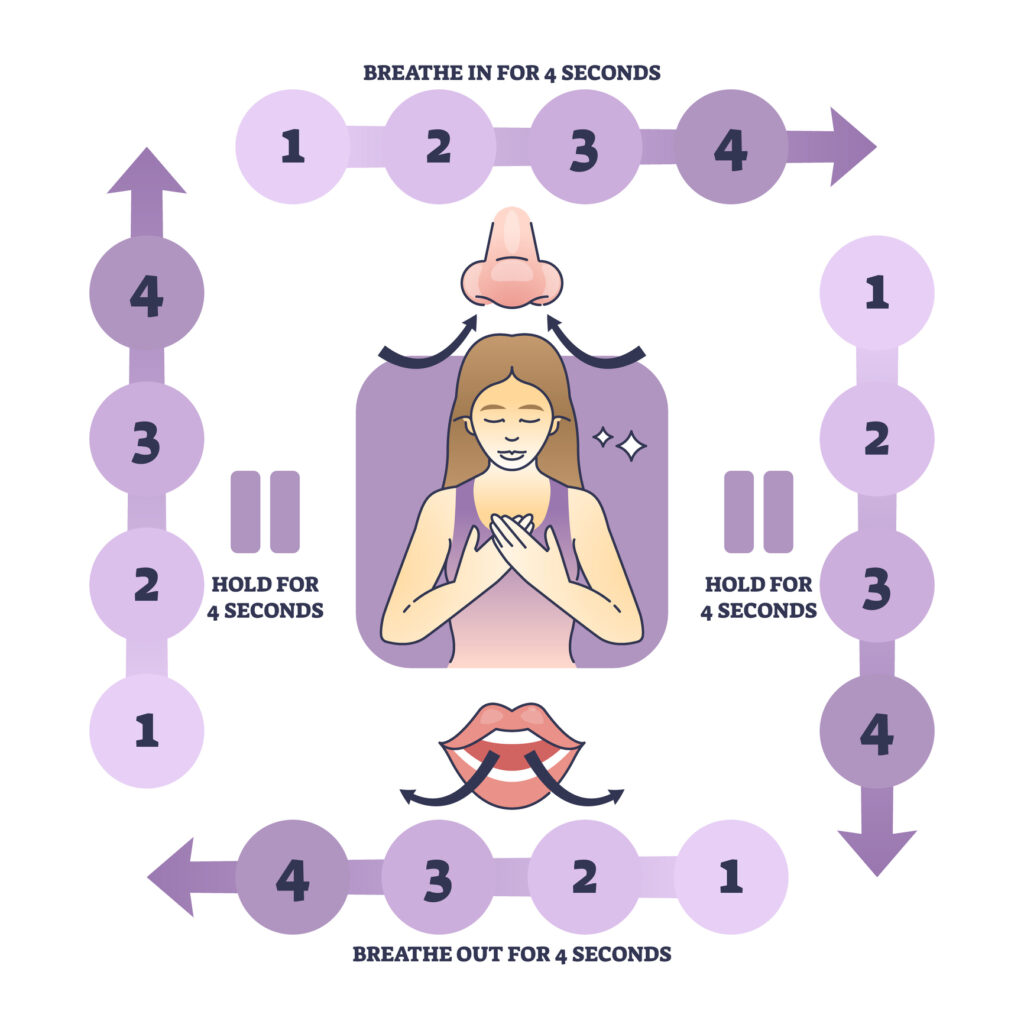You’ve Already Tapped Into Genius Mode Before
Chances are, you’ve already experienced what’s known as “genius mode”, you just didn’t have the words for it. Think back to a time when everything felt effortless: you were solving problems quickly, making connections rapidly, or performing with incredible focus. These moments might’ve happened during a timed exam, while delivering a speech, in the heat of a sports match, or even in the quiet of a late-night study session.
What they all have in common is that you felt fully present, highly capable, and remarkably in control. Psychologists call this state flow. In flow, your brain is neither bored nor overwhelmed, it’s in perfect alignment with the task at hand. You stop worrying about whether you’re doing well and instead become immersed in the doing.
Time can feel like it slows down or speeds up, and actions often feel automatic, as if your mind and body are synced perfectly. What’s important to understand is that this state isn’t a fluke or something reserved for a select few. It’s a deeply human capacity. You’ve been there before because your brain is wired for it.
You don’t need to be a genius to enter “genius mode.” You just need to recognize its presence in your life and understand that it can be reached deliberately. Once you realize this, flow becomes a tool not just a feeling. And that changes everything.
This State Is Called Flow, and It’s 100% Trainable
Flow is not random. It’s not reserved for artists, prodigies, or elite performers. It’s a psychological and physiological state of being that can be trained, just like physical fitness or a new language. Coined by Mihaly Csikszentmihalyi, flow refers to the mental state in which a person is fully immersed in a task with energized focus, deep involvement, and a sense of effortless action.
What makes flow powerful is that it doesn’t just feel good it unlocks peak performance. In flow, your brain is firing in a very specific way. The prefrontal cortex, the part responsible for self-criticism and overthinking goes quiet, allowing you to act without second-guessing. At the same time, dopamine and norepinephrine surge, sharpening attention and boosting motivation. Your brain is essentially in “super mode.”
What’s more, people who regularly enter flow report greater satisfaction, higher productivity, and faster learning. That’s why athletes, musicians, gamers, and even surgeons design their environments to foster flow. They don’t leave it to chance, they build routines, mental cues, and breathing techniques to access this state deliberately.
Your Brain Can’t Enter Genius Mode When It’s Rushed
In today’s world of constant pings, multitasking, and pressure to move fast, we often confuse speed with productivity. But neuroscience tells a different story. The brain cannot access its highest cognitive functions strategic thinking, creative insight, long-term memory when it’s operating in a state of rush or stress.
In fact, being rushed activates your brain’s “survival mode,” flooding your system with cortisol and adrenaline. These hormones are useful in a life-or-death moment, not when you’re trying to study for an exam or solve a complex problem.
When you’re rushed, your attention becomes fragmented. You jump from task to task, rarely achieving depth. The prefrontal cortex, responsible for decision-making and problem-solving, becomes suppressed. In this state, your thinking becomes reactive, not reflective. Mistakes increase. Memory weakens. Creativity dries up.
To unlock genius mode, your brain needs space. Space to breathe, to focus, to enter stillness. Slowness doesn’t mean laziness, it means precision. Top performers deliberately slow down before high-pressure moments to gather their thoughts, regulate their breath, and create mental clarity. They understand that true speed comes from calm, not chaos.
So, the next time you feel overwhelmed or behind, remember: rushing is not the answer. Slowing down might actually make you faster in the long run. Flow begins where frantic ends.
The Breath Is Your Genius Trigger
One of the most overlooked but powerful tools for unlocking your Genius Zone is something you’re already doing, breathing. Breath is the only bodily function that is both automatic and controllable. This gives it a unique role: it’s a direct gateway between your conscious mind and your nervous system. When used with intention, the breath can shift your brain out of stress mode and into focus mode within seconds.
Neuroscience has confirmed what yogis and martial artists have practiced for centuries: your breath controls your heart rate, brainwave patterns, and emotional state. A rapid, shallow breath signals danger to the brain, triggering fight-or-flight responses. But a slow, deep breath especially one with a longer exhale sends a powerful message of safety. This calms the amygdala (your brain’s fear centre) and activates the prefrontal cortex, allowing clarity, creativity, and deep focus to return.
Top performers in high-stakes fields use breathwork to maintain composure under pressure. Surgeons regulate their breathing before difficult procedures. Public speakers use deep breaths to control nerves. Even elite military units practice breath patterns before operations to stay calm and focused. Why? Because the breath is more than just oxygen it’s your remote control for genius.

This infographic illustrates box breathing—a simple yet powerful technique to regulate the nervous system and enhance focus.
Try the 4–6 Technique to Enter Genius Mode
So, how exactly do you use the breath to activate flow? One of the simplest and most effective methods is the 4–6 technique: inhale for four counts, exhale for six. This extended exhale activates your parasympathetic nervous system (the branch responsible for relaxation and mental clarity). It signals to your brain that you’re safe, focused, and ready to perform.
Try this: before your next study session, meeting, or creative task, pause and do five rounds of 4–6 breathing. Inhale deeply for four counts through your nose, hold for a moment, then exhale slowly for six counts through your mouth. Don’t rush it. Let your body settle. Notice how your chest loosens, your jaw unclenches, and your thoughts begin to slow.
This breathing pattern does more than just calm you, it primes your brain to enter the Genius Zone. By reducing the stress hormone cortisol and increasing alpha brainwaves (associated with focus and creativity), you create the exact neurochemical environment needed for flow.
Many high achievers use this technique as part of a daily ritual. Athletes use it in locker rooms. Students use it before exams. Creatives use it to break through blocks. It takes less than two minutes, but the mental reset it provides can last for hours.
Most People Stay in ‘Survival Brain’ All Day
Despite our best intentions, many of us live in a constant state of low-level stress. Notifications buzz, deadlines loom, and our attention is pulled in a dozen directions. This creates what neuroscientists call survival brain, a mode in which our sympathetic nervous system stays activated for long periods. In this state, our breathing becomes shallow, our thoughts become reactive, and our ability to access deep focus or creativity all but vanishes.
Survival brain is useful in emergencies, but toxic when it’s the norm. When we operate from this state all day, it becomes difficult to access flow, clarity, or innovation. Instead, we become trapped in short-term thinking, emotional reactivity, and decision fatigue. We’re mentally “on” but not actually effective.
The good news? You can exit survival mode with just one breath. Deliberate, slow breathing switches your nervous system from sympathetic (fight-or-flight) to parasympathetic (rest-and-digest). This shift lowers heart rate, reduces stress hormones, and tells the brain it’s safe to engage in complex, focused tasks. It invites calm, which is the foundation of genius.
If you want to enter the Genius Zone more often, you must build habits that disrupt survival mode. Step away from your screen. Take mindful breaths between tasks. Replace urgency with presence. The difference isn’t just mental, it’s biological.
Genius Feels Like Hyper-Focus + Inner Stillness
When most people imagine genius, they think of rapid thoughts, relentless energy, and constant mental activity. In truth, the genius state often feels like the opposite: it’s quiet. Thoughts become sharp but fewer. Distractions fade into the background. Self-judgment disappears. What emerges is a clean, effortless focus that combines intense concentration with deep calm.
This is the essence of flow: hyper-focus paired with inner stillness. You’re not overthinking or evaluating what you’re simply doing. Athletes often describe it as muscle memory. Artists call it being in the zone. Students may experience it as everything just making sense. In this state, you’re not wrestling with your brain, you’re riding a wave of mental clarity.
Time perception also changes. You may feel like time slows down, giving you more room to think, move, and decide. Alternatively, hours may pass in what feels like minutes. That’s because the part of your brain that tracks time the dorsolateral prefrontal cortex temporarily quiets during flow. With fewer internal distractions, your energy moves directly into action.
What’s important to recognize is how different this feels from your usual state of mind. The stillness of genius isn’t passive, it’s poised. It’s not lazy, it’s laser-sharp. Once you experience it intentionally, you’ll crave its clarity and recognize how much noise normally clouds your potential. Genius feels like you without friction.
The Best in the World Use This Every Day
Top performers don’t access flow by accident; they engineer it. Whether it’s a concert pianist, an Olympic swimmer, or a chess grandmaster, the world’s best understand that mindset is everything. That’s why they design daily routines, rituals, and mental practices to consistently enter their Genius Zone.
One thing nearly all of them have in common? Breath resets. Before stepping into high-pressure moments on a stage, in front of a camera, or on the field they use breathwork to shift into presence. This isn’t about superstition or performance tricks. It’s neuroscience. By calming the nervous system and sharpening focus, they prepare their brains for optimal output.
Take tennis legend Novak Djokovic, who uses mindfulness and breath control before each serve. Or military special forces, trained in “box breathing” to regulate decision-making under extreme stress. Even CEOs and thought leaders incorporate breath-based resets before major meetings or speeches. Why? Because these rituals deliver consistent results.
Genius is not something they hope to stumble into, it’s a state they know how to enter. And the best part? These tools aren’t locked behind elite training programs. They’re accessible to anyone willing to build small, intentional habits.
The difference between good and great often comes down to mental preparation. Breathwork, flow training, and calming rituals may seem small but for the best in the world, they’re non-negotiable. If it works for them, it can work for you.
This Isn’t About Being Born Smart
Accessing the Genius Zone is not about memorizing more or learning faster. It’s about changing how you show up mentally. When you learn to regulate your breath, shift from stress to stillness, and focus deeply without self-doubt, you create the ideal conditions for insight, retention, and creativity. This is intelligence under pressure and it’s a skill, not a trait.
Think about two students studying the same material. One is anxious, distracted, and rushing. The other is calm, intentional, and in flow. Who will learn faster? Who will retain more? It’s not about IQ. It’s about state of mind.
With deliberate practice, anyone can improve how they think, learn, and create. Flow training, breath control, and nervous system awareness aren’t “extras”, they’re the foundation. Once you realize genius is repeatable, you stop waiting for inspiration and start activating it.

This Venn diagram illustrates the “Zone of Genius”—the powerful overlap of talents, skills, competence, and passion.
Start Practicing, Not Just Studying
Knowing all of this is a good start but knowledge alone won’t unlock your Genius Zone. You have to practice. Repetition builds familiarity. Familiarity builds confidence. And confidence opens the door to flow. Just like you can’t get fit by reading about exercise, you can’t enter genius mode by reading about it. You have to train the access.
The breath is your entry point. Start small: practice the 4–6 technique before important tasks. Begin your day with five rounds of deep breathing to set the tone. Take 30 seconds between activities to reset your mind. Over time, these micro-habits create macro-results. They teach your brain that calm is accessible and powerful.
Don’t wait for the perfect moment to start. Every breath is an opportunity. Whether you’re studying, presenting, writing, or competing, you have the tools to improve your state of mind before you start. Use them.
Genius is not reserved for the gifted. It’s a pattern. A rhythm. A habit. And like any skill, the more you train it, the more natural it becomes.
FAQs: Unlocking the Genius Zone
What is the “Genius Zone”?
The Genius Zone refers to a high-performance mental state where you experience deep focus, calm clarity, and enhanced creativity also known as “flow.”
Is flow the same as being smart?
No. Flow is a trainable mental state, not a measure of intelligence. It enhances your performance regardless of your IQ.
How do I know if I’m in flow?
You may feel fully immersed, lose track of time, stop second-guessing yourself, and experience smooth, effortless thinking.
Can anyone access the Genius Zone?
Yes. Flow is a natural state and can be accessed by anyone with the right habits and mindset, not just elite performers.
What blocks people from entering flow?
Stress, rushing, multitasking, self-doubt, and shallow breathing are major blockers that keep the brain in “survival mode.”
What role does breathing play in mental performance?
Breath directly affects the nervous system. Slow, deep breathing calms the brain, sharpens focus, and primes you for genius-level thinking.
What is the 4–6 breathing technique?
It involves inhaling for 4 counts and exhaling for 6. This simple pattern calms the nervous system and boosts clarity.
How long should I practice the 4–6 breath?
Start with 5 rounds (about 1–2 minutes) before tasks requiring focus or calm. Longer sessions can deepen the effect.
Is this a form of meditation?
It shares elements with mindfulness but is simpler and more functional, designed to enhance performance rather than relax deeply.
How is this different from regular studying or preparation?
Flow training focuses on your mental state before and during performance, making your study or work much more efficient.
Does this work for students and professionals alike?
Absolutely. Whether you’re writing, coding, performing, or studying, entering flow enhances both speed and quality of work.
Can I enter flow during stressful situations?
Yes, but only if you train yourself to regulate stress through breath and focus. Flow helps you stay calm under pressure.
How often should I practice flow techniques?
Ideally, every day especially before cognitively demanding tasks. The more you practice, the faster you can enter the state.
What are some signs I’m not in flow?
You’re easily distracted, anxious, overthinking, checking your phone, or mentally fatigued.
Is multitasking compatible with the Genius Zone?
No. Flow requires single-task focus. Multitasking pulls you out of the zone and reduces performance.
Can I listen to music to get into flow?
Yes, but only instrumental or ambient music. Lyrics often distract the brain’s language centers.
Do top performers really use these techniques?
Yes. Athletes, CEOs, musicians, and even surgeons use breathwork and flow rituals before high-pressure tasks.
What if I have a short attention span?
That’s even more reason to train flow. These techniques help extend attention naturally, without force or strain.
Can flow improve creativity as well as focus?
Definitely. Flow enhances divergent thinking and insight, making it ideal for creative tasks like writing or problem-solving.
Where should I start if I’m new to this?
Start with 4–6 breathing before your next task. Reduce distractions. Pay attention to when you feel focused and build from there.
– Authored by Sohila Gill





